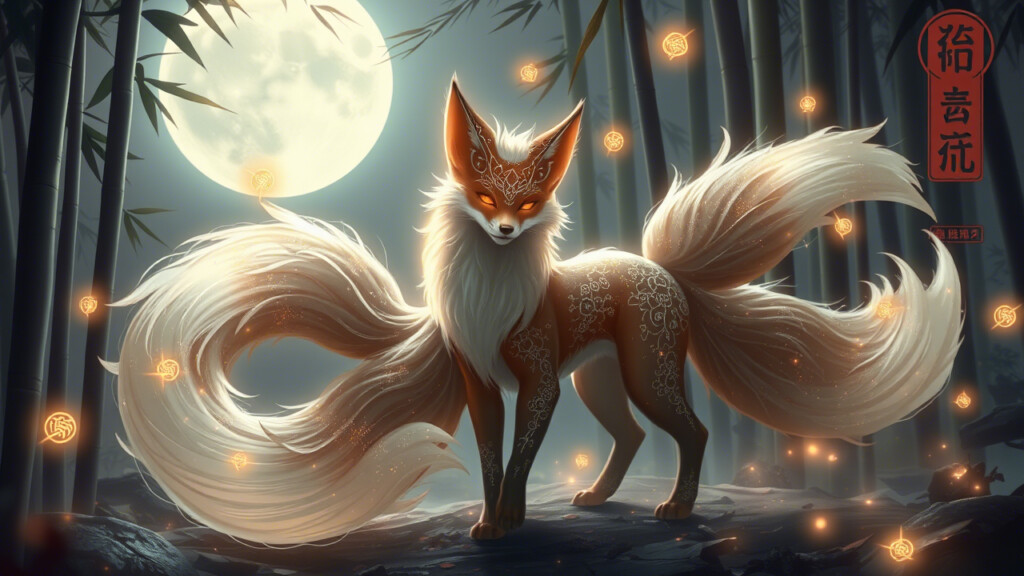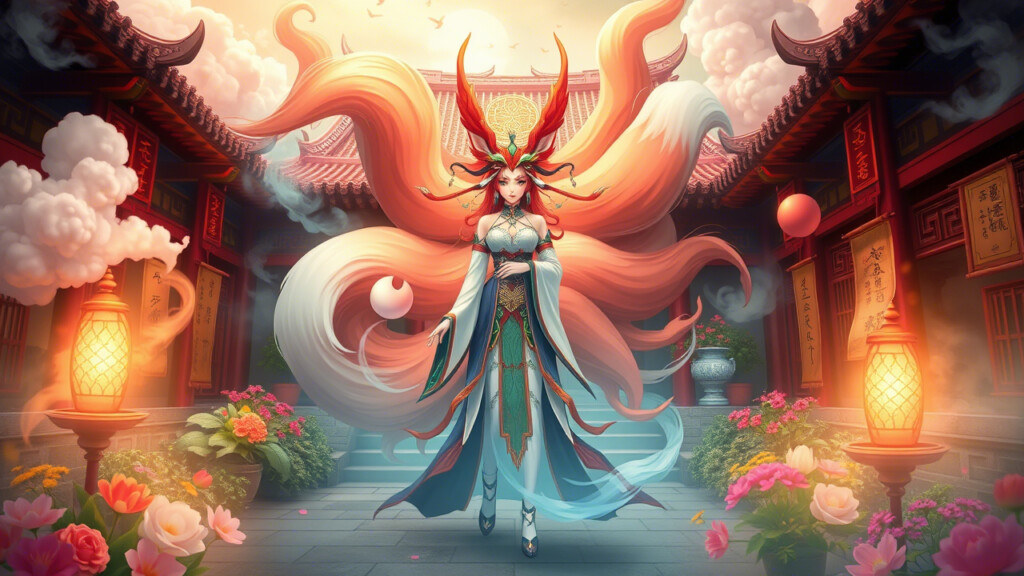In Chinese mythology, Huli Jing (狐狸精) – also known as the fox spirit – is one of the most well-known supernatural creatures, appearing in countless stories throughout history. Unlike the Gumiho (구미호) of Korea, which is often portrayed as a malevolent creature, Huli Jing can be either a seductive demon or a celestial being who attains divinity through cultivation.

Huli Jing represents allure, intelligence, and power, but it can also be a dangerous force that manipulates humans through charm and magic. So what is the true nature of the Chinese fox spirit? And why does it differ so much from the fox spirits of Korea?
THE ORIGINS OF HULI JING
The image of Huli Jing dates back to ancient Chinese history. Early records such as the Classic of Mountains and Seas (山海经, Shan Hai Jing) – a compilation of myths from the Warring States period (4th century BCE) – mention nine-tailed foxes that, after living for centuries, could transform into human form.
Later, the Book of Han (汉书, 1st century CE) described foxes that could shapeshift into beautiful women, often seen as omens of turmoil in the imperial court. Chinese historians, including Pu Songling, vividly depicted fox spirits in his classic work “Strange Tales from a Chinese Studio” (聊斋志异, Liaozhai Zhiyi), emphasizing their supernatural abilities and their dual nature—both alluring and dangerous.
HULI JING – A DEMON OR A GODDESS?
Huli Jing can be classified into two main categories:
- Malevolent Fox Demons – These fox spirits drain the life force of humans or use their beauty to manipulate and harm them. In Pu Songling’s Liaozhai Zhiyi, many fox spirits appear as seductive women who bring destruction to unsuspecting men. One famous story tells of a beautiful woman who lures men to their doom, only to be revealed as a fox demon.
- Fox Immortals (狐仙, Hu Xian) – These are foxes who, through extensive spiritual cultivation, become immortal beings. In some parts of China, people worship fox spirits as deities, believing that they can bring blessings if properly revered. Unlike the malevolent fox demons, these spirits are not inherently evil and can even assist humans in times of need.
THE CONNECTION BETWEEN HULI JING AND TAOISM
Since Huli Jing is closely linked to Taoism, understanding this relationship adds depth to its mythology. In Taoist philosophy, fox spirits are believed to undergo cultivation, striving for spiritual transcendence and immortality. If successful, they become Fox Immortals (Hu Xian, 狐仙), similar to celestial beings.

According to texts like “Taoism and Feng Shui Beliefs” by Chen Yuming, fox spirits must cultivate virtue and harmony with nature to ascend to a higher form of existence. However, foxes that fail to control their base desires or stray from the path of cultivation become demons that prey on human weakness.
This Taoist perspective explains the duality of Huli Jing—some are revered as gods, while others are feared as tricksters and seducers.
HULI JING IN MODERN CHINESE LITERATURE AND WEBTOONS
Like Korea’s Gumiho, Huli Jing has also found a place in modern storytelling, especially in Chinese webtoons and digital fiction.
Chinese webtoon platforms such as Weibo Comics and QQ Comics frequently feature short stories about Huli Jing, portraying them as tragic figures caught between their supernatural nature and their desire for love. These modern retellings blend romance, fantasy, and horror, reimagining the fox spirit not just as a predator, but as a creature struggling with its own destiny.
HULI JING – A TIMELESS LEGEND
Huli Jing is not just a mythical creature but also a reflection of Chinese society’s evolving views on power, beauty, and morality. Over time, fox spirits have been perceived both as bringers of destruction and as divine beings.
Whether seen as a demon or a goddess, Huli Jing remains one of the most enduring figures in Chinese folklore, continuously appearing in literature, films, and even religious practices today.
So, if one day you meet a person with sharp, glimmering eyes and an irresistibly charming smile—will you dare to look behind them, to see if a fox’s tail is hiding in the shadows?
